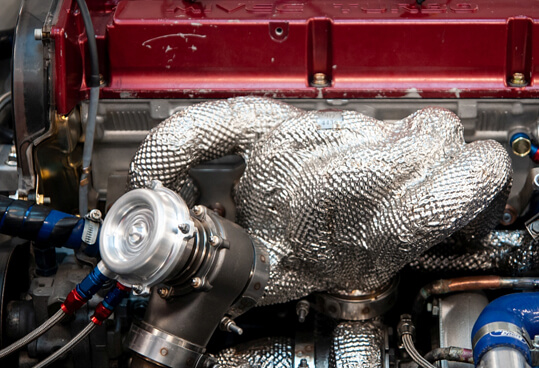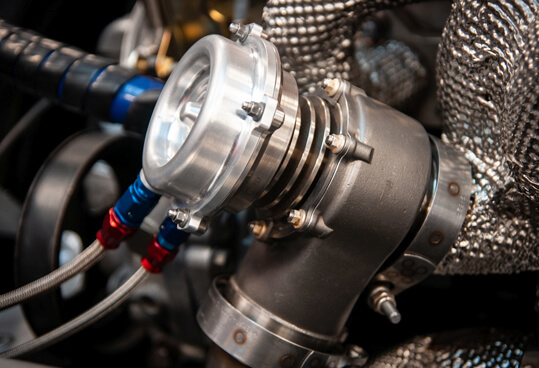The evolution of ALS valves has been a game-changer in the realm of motorsport engineering, reshaping the landscape of engine performance and turbocharger technology. Here, we delve into ALS valves' origins, advancements, and transformative impact on motorsport and beyond.
Early developments
The journey of ALS technology can be traced back to the persistent challenge of turbo lag – the frustrating delay in engine response experienced with early turbocharged engines. In the nascent days of motorsport, turbo lag was more than just a nuisance; it presented a formidable obstacle for engineers and drivers alike, severely hindering acceleration and throttle response precisely when milliseconds mattered most on the track.
Faced with this formidable challenge, engineers embarked on a quest for innovative solutions to mitigate turbo lag and unlock the full potential of turbocharged engines. The pursuit of faster, more responsive performance led to the inception of ALS technology, born out of a necessity to maintain boost pressure during throttle transitions.
In motorsport competition, where every fraction of a second counts, early attempts at combating turbo lag were both ingenious and audacious. Engineers experimented with various methods to keep the turbocharger spinning and boost pressure at the ready, even when the throttle was momentarily closed.
These early ALS prototypes often employed rudimentary yet effective techniques, such as redirecting exhaust gases back into the turbine or introducing additional fuel into the combustion chamber during deceleration. These methods aimed to sustain the energy flow to the turbocharger, ensuring it remained spooled up and ready to deliver instantaneous power when the throttle was reapplied.
Integration into motorsport
While these early ALS systems were crude by modern standards, they represented a crucial step forward in turbocharger technology, laying the groundwork for more sophisticated iterations. The relentless pursuit of faster lap times and superior performance on the track fuelled further innovation, driving engineers to push the boundaries of what was thought possible with turbocharged engines.
As ALS technology continued to evolve and mature, it would ultimately revolutionise the world of motorsport, transforming turbocharged engines from temperamental beasts into finely tuned instruments of precision and power. Racing teams quickly recognised the competitive advantage offered by ALS technology and began integrating ALS valves into their vehicles.
From rally cars to Formula 1, ALS valves revolutionised engine performance on the track, allowing drivers to push the limits of acceleration and cornering speed. The widespread adoption of ALS technology in motorsport showcased its effectiveness in delivering consistent and predictable power delivery, giving teams a decisive edge in competitive racing.
Evolutionary milestones
Over the years, ALS valves have undergone a remarkable metamorphosis, driven by a relentless pursuit of performance, reliability, and efficiency on the track. One of the most significant areas of advancement lies in materials engineering. Early ALS valves were often constructed from basic metals and alloys, which limited their durability and performance under the extreme conditions of motorsport competition.
However, with advancements in materials science and engineering, modern ALS valves now benefit from the use of exotic materials and advanced alloys specifically engineered to withstand the rigours of racing. These materials offer superior strength, heat, and corrosion resistance, ensuring optimal performance and longevity even in the most demanding racing environments.
Furthermore, advancements in design have played a pivotal role in enhancing the effectiveness of ALS valves. Engineers have developed innovative valve geometries, and configurations optimised for maximum flow efficiency and minimal pressure drop. These design improvements enable ALS valves to deliver precise control over boost pressure while minimising energy losses, resulting in improved engine response and performance on the track.
In addition to materials and design, significant strides have been made in control systems and electronics, further enhancing the capabilities of ALS valves. Modern ALS systems incorporate sophisticated electronic control units (ECUs) and sensors that continuously monitor engine parameters and adjust valve operation in real time to optimise performance. This level of precision and responsiveness ensures that ALS valves can adapt to changing driving conditions and deliver consistent performance across a wide range of operating conditions.
Applications beyond motorsport
Beyond motorsport, ALS technology has made its mark on the broader automotive industry, influencing the development of high-performance road cars. ALS valves have been adapted for use in production vehicles, enhancing engine responsiveness and driving dynamics for enthusiasts and everyday drivers alike. The transfer of ALS technology from the racetrack to the road underscores its versatility and relevance in modern automotive engineering.
The evolution of ALS valves represents a remarkable journey of innovation and ingenuity in motorsport engineering. From its humble beginnings to its widespread adoption and continued advancements, ALS technology has redefined the boundaries of engine performance and turbocharger technology.
Contact the DSPS team today to learn which ALS valve will be best for your motorsport vehicle.




